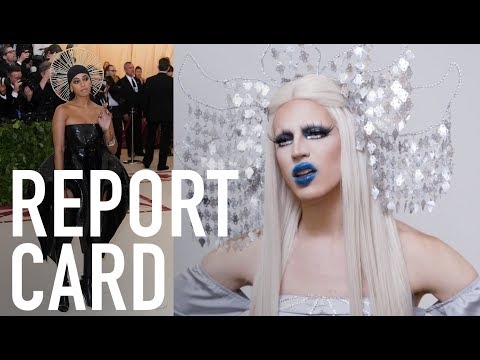Courtyard Suite: Where Men's Fashion Moves
Men's fashion has long seemed insensitive to change.. But past fashion weeks prove that everything has changed - shown on the catwalks was an expression of global trends. People of different ages now appear on the stage and in advertising campaigns, in stores there are clothes that it is difficult to say, whether it is “male” or “female”, and luxury brands are trying to adapt to the needs of young people, attracting street brands to collaborations. Following the results of men's shows, we decided to talk to the experts in order to get an inside view and to understand what these changes mean for fashion in general.
The industry has reached a turning point. Although men's fashion has always been inferior to women's in creativity and scope, the key trends of modernity become much more noticeable in it. It was on the men's show that gender ambivalence was declared - although it happened, I think, by chance. After Frida Giannini left Gucci, the brand’s management could not find someone from the outside in time, and here one of the old employees, Alessandro Michele, revealed himself in all splendor, realizing that such a chance happens once in a lifetime. The management, as before, wanted to make jeans and loafers - no one knew what to expect from Michele. I suspect that he came up with the concept, using blanks for some female precollection. Michele caught the trend at the peak, after that everything began to fade away - but he started a giant wave.
Supreme is the same story. Like the Gucci collection, the Louis Vuitton Collaboration with Supreme is the main evidence of how significant street fashion has become. Just a year ago, visitors to the fashion week went to total black outfits, knitwear, things with some kind of asymmetrical buckles. Now there is no black at all, everything is either in streetwear, or in stamps that are actively flirting with it. Typical bow: hoodie, big coat, merch, sneakers. It does not have to be designer things: someone has hoods Vetements, and someone does not, but they do not look different. This is an ideal collaboration that benefits both: in Paris it is very important to show who is standing at the microphone. If there is no luxury, fashion does not make sense, and Supreme now brought streetwear to luxury territory. Now brands that are engaged in design, look ridiculous. Tricked fashion is obsolete.
Eastern society is very traditional, street style and subcultures are also
The main global trend is subcultural influence. Stritvir is an extremely masculine sphere in which there is no place for gender ambivalence. All its members are stepping into the traditionally "male" territory. Here there was a shift of another kind: the modern costume imitates not so much a female or male, but a Muslim one. We live in a multicultural world, and now the West is paying attention to the East: long shirts, tight pants with shorts over it - it turned out to be understandable to different people, including the “simple” guys. Eastern society is very traditional, street style and subcultures, too.
In general, men's fashion in decline: there were no decisive high-profile performances. The main trend is a new silhouette, more voluminous in all senses. If the previous five years, the spotlight was narrow, but now returns the silhouette of the 30s, 50s, 80s: wide trousers, deliberately voluminous jackets and jackets. This is what Raf Simons did last season: he interpreted the grunge, showing mega-versize, and, on the contrary, shortened, "sat down" sweaters - many designers followed him. Of the small trends - jackets and loose robes with inscriptions on the back, it seems, too, thanks to Simons and his collaboration with Sterling Ruby. Gone are the jeans, military style and bearded men with tattoos. The focus is on Lumpen style. This is also a subcultural influence: fashion people today are looking for something “real” precisely “among the people”, in the suburbs - young people are simply associated with it.
The fashion industry has always been obsessed with youth. This is an old marketing ploy: to make adult shoppers with money feel "inferior", so that they, trying to get rid of this feeling, bought your clothes. What has changed is that streetwear is now more popular than ever, and this rise in street fashion has coincided with the advent of a new generation of young people who are ready to consume fashion on an unprecedented scale. Never before have there been so many rich parents children on the market. They all want to wear what is familiar and familiar to them: hoodies, sweatpants, sneakers, bombers and so on. The popularity of the same semi-sports image with a bias in the "gopnik" is the result of the influence of Gosha Rubchinsky. At the same time, this image is not at all obligatory: there is no longer any single “standard” of what the “correct” modern man should look like - the fashion is now at the postmodern stage.
It seems to me that the trend of gender neutrality has been replicated by magazines like Dazed. It seems that in practice this idea is understandable to a very small number of real fashion buyers. Alessandro Michele in Gucci continues to expand its own universe, but I doubt that the brand’s customers look as gender-neutral as its models. I suspect that they are attracted to the same things as everyone else: marketing and hyip around the brand.
Men's line Louis Vuitton has absolutely no effect on fashion, while Supreme - on the contrary
This time there were a lot of Crop tops and shortened jackets on the runways, which Rick Owens began to actively promote three seasons ago. However, I prefer to keep a close eye only on the work of designers that interest me. In general, this season looked pretty "safe": no one really offered any really sharp, risky decisions. I also liked the show again, Rick Owens: he did not make the most “wearable” collection, but again he presented a very clear concept, he remained true to his vision. I appreciate the creators with their own eyes, and Owens is definitely one of them. But if you want to know what is happening in fashion now, then follow up for this is behind Vetements.
It seems to me that the collaboration with the LV Supreme betrayed the culture of streetwear. I think this is a “fall” for Supreme and a “win” for Louis Vuitton. After all, the men's line Louis Vuitton has absolutely no effect on fashion, while Supreme - the opposite. The main contradiction is that Louis Vuitton, as a brand, is a symbol of “status” among the bourgeoisie, and Supreme must, in its essence, stand apart from all this. Does anyone care? The real problem of the current fashion is that it has lost all its meaning. Buyers ultimately just want to get something that no one else has. The press is constantly told how the customers of the fashion houses have become smarter, meaning that they have become more savvy, they know what and where to buy. But they are still not analytically suited to fashion.
Aegeism is etched not only in women's fashion, but also in men's: at the recent show Vetements had more middle-aged and elderly than young people. At first glance, age has generally ceased to be a factor in the choice of a model - but this is deceptive inclusivity. The consumer likes to see retirees and shaven guys on the catwalk: this shows that the fashion industry is no longer an inaccessible Olympus, from which style leading figures tell the plebs what is right to wear and what is not. Brands create an illusory picture where everyone can become a model, fashion is available to everyone. In fact, of course, everything is wrong. If you come to the agency with an increase of less than 165 and your dad is not Johnny Depp, then you will simply waste your money on travel. The model business is still sexist, age-based and based on the classic model parameters set in the 80s. He just skillfully covers it with shaven-headed students and elegant grandmothers.
Male and female fashion, meanwhile, has already merged into one stream: there are almost no individual men's shows. Look at the past week in Paris - some mixed shows. Again, it would be nice to say that this is a very progressive step towards true gender neutrality, because men at such shows often wear what could be called "women's" clothes. But the point is banal economy: men's shows do not justify their individual value, the guys will not be standing until the morning in the queue at Michael Kors on Madison Avenue to buy what they showed that night.
People now want to dress "to humanly"
Over the drop Supreme, maybe it will, but this is another story. Have you seen such a new meme - "Waiting"? The Supreme and Louis Vuitton collaboration is just waiting: it’s just as sad, fat and dull, sitting and waiting for you to do something about it. Street fashion in America is a separate subculture from the general industry, in which it is easy to establish your brand, it is easy to make it successful and just as easy to burn out. It is also a separate culture of consumption of the so-called hi-pbists (by the name of the site of the same name Hypebeast). Suddenly, the main player of this "subindustry" rushes into the main industry and says: "Guys, do you really not want to give six thousand dollars for a suitcase? No? Well, at least there will be 200 for a bandanna?" And waiting for you to say. It’s just trolling plus a chance to cut down as much money as possible on the “highbike” as quickly as possible.
It is difficult to talk about trends today. You can talk for a long time about skinny jeans, sports jackets, slogans on T-shirts, but this makes no sense - things just became prohibitively expensive. People now want to dress "to humanly." In this context, the two main shows of Paris were Vetements and Jean Paul Gaultier. Vetements, because Demna perfectly felt the nerve of time. This is not a show at all, but Mayakovsky’s “Slap in the Face of Public Taste”, a statement that the haute couture is dead. And behind him, Gauthier is a simple and intelligible answer that, they say, no, my friend, do not rush to bury us - you just want to live. Everyone really just wants to live and wear nice comfortable beautiful things. But I'm afraid that is not fate.
Most of all, I remember the Balenciaga show: it is interesting to watch T-shirts over coats and jackets, but it won't go far, as it turned out on the catwalk, and it will stay there. It seems to me that Balenciaga and Vetements are just having fun: they make money and attract attention. Search for a political or ideological background in everything is optional. I am just as calm about the joint collection Supreme and Louis Vuitton: it’s entertaining that such a “rejuvenation” of the brand is taking place before our eyes, but it still seems to me that there are houses that should remain ourselves, despite the renewal of the audience. Lanvin turned out much better: it became younger, brighter, more liberal - and it went without shock.
Stylistically, I liked Kenzo: Leon and Lim combined the women's and men's shows, all were dressed in sweaters below the knee and short jackets. This is rare, as it seems to me, the case when the gender fashion looks wearable. It seems to me that things like those that were on Michele's shows are made purely for the show - they are not in stores. That is, they may be, but they are served in a completely different way than on the podium.
Men's fashion loses women's: I think we still will not get away from the traditional trousers, jacket and shirt
The most current image now is an oversized shirt, loose pants with a lowered armhole, a jacket of non-classical cut — everything is voluminous, simple, as if you were awake in this, but in no way worn out. Plus, the game with the forms: jackets and sweaters can be super-short or super-long, there is not something average. According to my feelings, streetvir will come to naught in a couple of seasons, as well as hyper-volumes, which are now in trend. Two thousand men will soon return, about the comeback of which they have long been spoken in the women's fashion: the 80s were beaten off, the 90s were beaten off - only the zero ones remained. Zero in the men's fashion - this is a luxury, like Philip Plane, these are belts with buckles, crocodile bags, everything is expensive or rich. But in general, trends in mass male fashion do not work like in women’s fashion: one cannot say that everyone is suddenly addicted at some point, for example, in 1980s. Rather, one particular thing, such as parks or skinny jeans.
Men's fashion loses women's: I think we still will not get away from the traditional trousers, jacket and shirt. The trouble is in stereotypes: the majority of men do not like colors, it is easier for them to dress in black and dark blue, to put on jeans with a leather jacket or a tracksuit - judging by Russia. We do not even have our own designers who dress men, because there is simply no one to buy their collections.
Cover: Facebook / Louis Vuitton




